
The Malleus Maleficarum, usually translated as the Hammer of Witches, is the best known treatise purporting to be about witchcraft. It was written by the German Catholic clergyman Heinrich Kramer and first published in the German city of Speyer in 1486. Some describe it as the compendium of literature in demonology of the 15th century. Kramer presented his own, somewhat idiosyncratic views as the Roman Catholic Church's position.
Witchcraft, as most commonly understood in both historical and present-day communities, is the use of alleged supernatural powers of magic. A witch is a practitioner of witchcraft. Traditionally, "witchcraft" means the use of magic or supernatural powers to inflict harm or misfortune on others, and this remains the most common and widespread meaning. According to Encyclopedia Britannica, "Witchcraft thus defined exists more in the imagination of contemporaries than in any objective reality. Yet this stereotype has a long history and has constituted for many cultures a viable explanation of evil in the world". The belief in witchcraft has been found in a great number of societies worldwide. Anthropologists have applied the English term "witchcraft" to similar beliefs in occult practices in many different cultures, and societies that have adopted the English language have often internalised the term.

Necromancy is the practice of magic involving communication with the dead by summoning their spirits as apparitions or visions for the purpose of divination; imparting the means to foretell future events and discover hidden knowledge. Sometimes categorized under death magic, the term is occasionally also used in a more general sense to refer to black magic or witchcraft as a whole.

A witch-hunt, or a witch purge, is a search for people who have been labeled witches or a search for evidence of witchcraft. Practicing evil spells or incantations was proscribed and punishable in early human civilizations in the Middle East. In medieval Europe, witch-hunts often arose in connection to charges of heresy from Christianity. An intensive period of witch-hunts occurring in Early Modern Europe and to a smaller extent Colonial America, took place from about 1450 to 1750, spanning the upheavals of the Counter Reformation and the Thirty Years' War, resulting in an estimated 35,000 to 50,000 executions. The last executions of people convicted as witches in Europe took place in the 18th century. In other regions, like Africa and Asia, contemporary witch-hunts have been reported from sub-Saharan Africa and Papua New Guinea, and official legislation against witchcraft is still found in Saudi Arabia and Cameroon today.
Christian views on magic vary widely among Christian denominations and among individuals. Many Christians actively condemn magic as satanic, holding that it opens the way for demonic possession. Some Christians simply view it as entertainment. Conversely, some branches of esoteric Christianity actively engage in magical practices.
The Witchcraft Acts were a historical succession of governing laws in England, Scotland, Wales, Ireland, and the British colonies on penalties for the practice, or—in later years—rather for pretending to practice witchcraft.
Black magic has traditionally referred to the use of supernatural powers or magic for evil and selfish purposes.
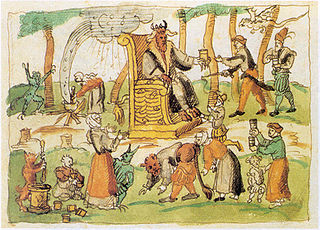
A Witches' Sabbath is a purported gathering of those believed to practice witchcraft and other rituals. The phrase became especially popular in the 20th century.

The Case of Charles Dexter Ward is a short horror novel by American writer H. P. Lovecraft, written in early 1927, but not published during the author's lifetime. Set in Lovecraft's hometown of Providence, Rhode Island, it was first published in the May and July issues of Weird Tales in 1941; the first complete publication was in Arkham House's Beyond the Wall of Sleep collection (1943). It is included in the Library of America volume of Lovecraft's work.

Daemonologie—in full Dæmonologie, In Forme of a Dialogue, Divided into three Books: By the High and Mightie Prince, James &c.—was first published in 1597 by King James VI of Scotland as a philosophical dissertation on contemporary necromancy and the historical relationships between the various methods of divination used from ancient black magic. It was reprinted again in 1603 when James took the throne of England. The widespread consensus is that King James wrote Daemonologie in response to sceptical publications such as Reginald Scot's The Discoverie of Witchcraft.
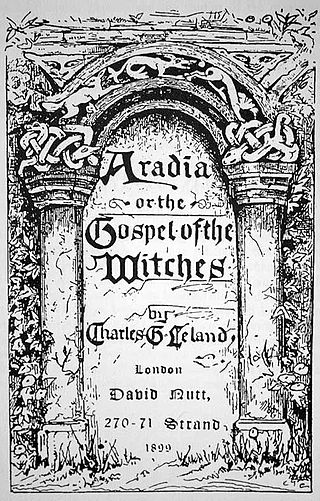
Aradia, or the Gospel of the Witches is a book composed by the American folklorist Charles Godfrey Leland that was published in 1899. It contains what he believed was the religious text of a group of pagan witches in Tuscany, Italy that documented their beliefs and rituals. Historians and folklorists have disputed the existence of such a group. During the 20th century, the book was influential in the development of the contemporary Pagan religion of Wicca.
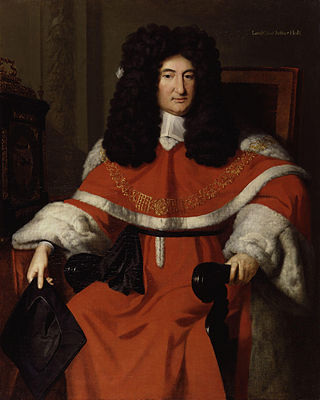
Sir John Holt was an English lawyer who served as Lord Chief Justice of England from 17 April 1689 to his death. He is frequently credited with playing a major role in ending the prosecution of witches in English law.
The Formicarius, written 1436–1438 by Johannes Nider during the Council of Florence and first printed in 1475, is the second book ever printed to discuss witchcraft. Nider dealt specifically with witchcraft in the fifth section of the book. Unlike his successors, he did not emphasize the idea of the Witches' Sabbath and was skeptical of the claim that witches could fly by night. With over 25 manuscript copies from fifteenth and early sixteenth century editions from the 1470s to 1692, the Formicarius is an important work for the study of the origins of the witch trials in Early Modern Europe, as it sheds light on their earliest phase during the first half of the 15th century.
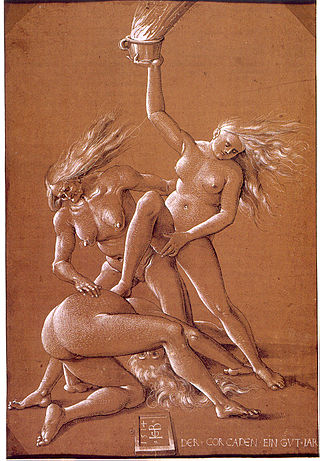
European witchcraft is a multifaceted historical and cultural phenomenon that unfolded over centuries, leaving a mark on the continent's social, religious, and legal landscapes. The roots of European witchcraft trace back to classical antiquity when concepts of magic and religion were closely related, and society closely integrated magic and supernatural beliefs. Ancient Rome, then a pagan society, had laws against harmful magic. In the Middle Ages, accusations of heresy and devil worship grew more prevalent. By the early modern period, major witch hunts began to take place, partly fueled by religious tensions, societal anxieties, and economic upheaval. Witches were often viewed as dangerous sorceresses or sorcerers in a pact with the Devil, capable of causing harm through black magic. A feminist interpretation of the witch trials is that misogynist views of women led to the association of women and malevolent witchcraft.

Various forms of witchcraft and divination are mentioned in the Hebrew Bible, which are expressly forbidden.

The Witchcraft Suppression Act 3 of 1957 is an act of the Parliament of South Africa that prohibits various activities related to witchcraft, witch smelling or witch-hunting. It is based on the Witchcraft Suppression Act 1895 of the Cape Colony, which was in turn based on the Witchcraft Act 1735 of Great Britain.
Witch-hunts are a contemporary phenomenon occurring globally, with notable occurrences in Sub-Saharan Africa, India, Nepal, and Papua New Guinea. Modern witch-hunts surpass the body counts of early-modern witch-hunting. Sub-Saharan Africa, particularly the Democratic Republic of Congo, South Africa, Tanzania, Kenya, and Nigeria, experiences a high prevalence of witch-hunting. In Cameroon, accusations have resurfaced in courts, often involving child-witchcraft scares. Gambia witnessed government-sponsored witch hunts, leading to abductions, forced confessions, and deaths.
Witch trials and witch related accusations were at a high during the early modern period in Britain, a time that spanned from the beginning of the 16th century to the end of the 18th century.
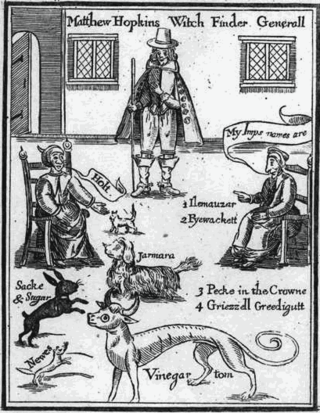
In England, witch trials were conducted from the 15th century until the 18th century. They are estimated to have resulted in the death of perhaps 500 people, 90 percent of whom were women. The witch hunt was at its most intense stage during the English Civil War (1642–1651) and the Puritan era of the mid-17th century.
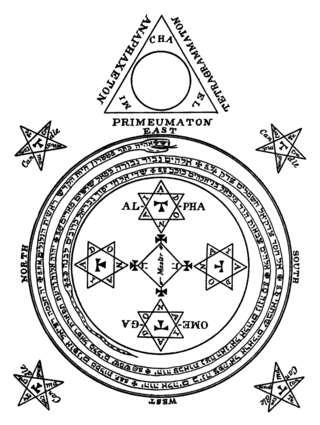
Goetia is a type of European sorcery, often referred to as witchcraft, that has been transmitted through grimoires—books containing instructions for performing magical practices. The term "goetia" finds its origins in the Greek word "goes", which originally denoted diviners, magicians, healers, and seers. Initially, it held a connotation of low magic, implying fraudulent or deceptive mageia as opposed to theurgy, which was regarded as divine magic. Grimoires, also known as "books of spells" or "spellbooks," serve as instructional manuals for various magical endeavors. They cover crafting magical objects, casting spells, performing divination, and summoning supernatural entities like angels, spirits, deities, and demons. Although the term "grimoire" originates from Europe, similar magical texts have been found in diverse cultures across the world.













